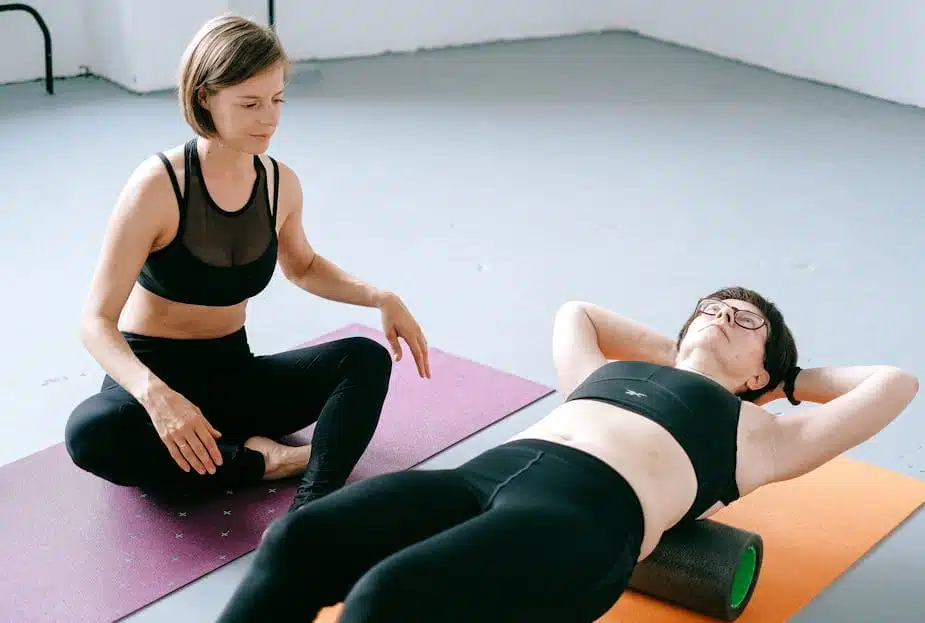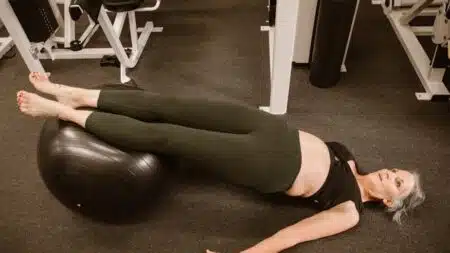Have you ever felt those stubborn knots in your muscles that just won’t go away? That painful tightness that makes movement difficult and ruins your workouts? Foam rolling is the secret weapon to blast through those knots and unlock a whole new level of mobility, performance, and total body wellness.
In this comprehensive guide, you’ll discover how foam rolling can transform your body and dramatically boost your health. We’ll explore the science behind why it works, how to do it properly, and the remarkable benefits you can expect, from reduced muscle soreness to enhanced flexibility.
Whether you’re a pro athlete or just starting on your fitness journey, foam rolling offers profound advantages. Read on to learn the convincing reasons why this technique deserves a spot in your regular wellness routine.
Why use a foam roller?
Picture this – you’re about to head out for a run, but your calves are tight and your hamstrings feel knotted. Not the best way to start an intense workout! Foam rolling before your run can help release that built up tension, allowing you to perform at your peak with fluid, pain-free movement.
But foam rolling isn’t just for pre-workout prep. Making it part of your post-workout routine is just as crucial. Those micro-tears in your muscle fibers need some TLC to repair and rebuild stronger. Using a foam roller lightly massages the tissue, increasing blood flow to whisk away metabolic waste products and deliver nourishing nutrients.
Beyond athletic performance, consistently foam rolling helps cultivate lasting flexibility. It gradually “reprograms” your fascia – the connective tissue enveloping your muscles – to become more pliable. This restores your full range of motion over time. Think of it as pressing “undo” on years of strain, poor posture, and injuries locking up your joints.
The benefits don’t stop there. Foam rolling even provides mental health perks, leaving you feeling calmer and more grounded after releasing chronically tensed areas. Consider it a dose of mindfulness along with physical therapy!
Now that you know why foam rolling matters for both fitness fanatics and everyday folks, let’s unpack how it achieves such powerful benefits.
The science behind foam rolling: Fascia release and more
Foam rolling falls under the umbrella of self-myofascial release (SMR) techniques. Beyond traditional deep tissue massage, SMR zeroes in on your fascia, providing targeted compression to give stiffness and adhesions the boot.
This connective tissue web wraps around your muscles, bones, nerves, and organs like plastic wrap. Fascia allows muscles to glide smoothly across each other during movement. But injuries, repetitive strain, and inactivity can cause thick, rigid bands of scar tissue to form. SMR breaks down those troublesome adhesions, while also increasing blood flood, improving mobility, and stimulating other self-healing mechanisms.
Targeting connective tissue: The key to lasting flexibility
Unlike stretching alone, which focuses only on muscles, SMR also addresses restrictions in fascia and scar tissue. This is why it delivers more permanent, cumulative flexibility improvements over time.
One key study demonstrated this phenomenon. When foam rolling was combined with static stretching, participants gained 10% more knee range of motion compared to stretching alone. The benefits lasted 10 minutes after the SMR session ended.
Boosting blood flow to accelerate recovery
Increasing blood circulation is another way foam rolling does wonders. The pressure and movement flushes areas with nutrient-rich, oxygenated blood to:
- Clear out lactic acid, inflammatory chemicals, and other waste products
- Deliver key building blocks for repairing damaged muscle fibers
- Reduce soreness and speed overall recovery
One study on foam rolling found subjects able to extend their limbs 15% farther without pain after 20 minutes of SMR. This was due to reduced inflammation and swelling in the surrounding muscle tissues.
Benefits of foam rolling
Now that you grasp the science behind why foam rolling works, let’s explore the incredible whole-body benefits you can realize:
Smoother, pain-free movement
Foam rolling prepares your body for any physical activity by lubricating joints and allowing muscles to glide effortlessly. It also prevents overuse injuries down the road.
People often foam roll to:
- Loosen up pre-workout: Getting blood flowing to muscle groups needed for your chosen exercise.
- Cool down post-workout: Flush out lactic acid and micro-tears to accelerate recovery.
- Prevent injury: Restoring optimal alignment and mechanics for your body long-term.
Less muscle soreness
A vigorous workout inevitably results in some degree of next-day muscle soreness. Lightly massaging muscles with a foam roller provides gentle compression that reduces this bothersome post-workout pain.
One study found foam rolling right after exercise decreased soreness at 24 and 48 hours post-workout compared to no SMR.
Improved athletic performance
Combining foam rolling with your training maximizes athletic performance gains. Restoring ideal range of motion and alignment allows you to move more efficiently with less compensation and risk of injury.
SMR also helps muscles stay relaxed during activity for optimized power output. One study observed improved vertical leap and run times in athletes after consistent foam rolling.
Faster workout recovery
Your muscles need adequate rest between intense training sessions to fully adapt and grow stronger. Foam rolling enhances recovery by:
- Increasing circulation to carry nutrients into damaged muscle fibers.
- Breaking up lactic acid and other waste buildup.
- Preparing your body for quicker muscle repair.
Chronic pain relief
Foam rolling provides a convenient form of massage you can utilize anytime, no appointment needed! SMR therapy helps alleviate chronic tightness and pain associated with:
- Artritis
- Fibromyalgia
- Plantar fasciitis
- Sciatica
- Shin splints
- Lumbalgia
Reduced cellulite appearance
While research is limited, some evidence suggests foam rolling may provide temporary smoothing of the skin’s appearance by releasing fascial adhesions. Consistency is key for lasting aesthetic improvement.
Always combine SMR with full-body strength training, cardio, and a skin-friendly diet for best results.
Decreased stress levels
Interestingly, foam rolling may also offer stress relief by helping you relax both body and mind. Much like yoga, the deep breathing and concentration on releasing muscle tension has meditative benefits.
Proper foam rolling technique
Now that you’re convinced of the benefits, let’s get into logistics so you can start foam rolling correctly.
Follow these technique tips to maximize results:
- Use 10-30 pounds of pressure and slowly roll over tight areas for 30-90 seconds. Avoid bones and joints.
- Breathe deeply and relax into discomfort instead of tensing up.
- Roll the muscle group both horizontally and vertically.
- Roll gently after workouts, and use more pressure on rest days.
- Stay hydrated post-rolling to optimize circulation.
- Ease into it if new to SMR. Shorter durations with lighter pressure is fine.
How to choose the best foam roller
With foam rolling’s rising popularity, the market is flooded with options that can overwhelm. Here’s what to look for:
Density – Denser foam provides deeper tissue massage, while less dense foam offers gentler pressure. Try both to see what feels best.
Texture – Smooth rollers are moderately firm and best for beginners. Textured rollers have nubs that dig into tight spots more aggressively.
Size – Standard is 36” long x 6” in diameter. You can opt for variations like half rollers (18”) or mega rollers (36” x 10”).
Shape – Round rollers are the norm, but wedge shapes are angled higher on one side to target hip flexors and shoulder blades more easily.
Material – Most quality foam rollers are molded from EPP or EVA foam that retains shape and has minimal breakdown over time.
Start rolling today!
As you can see, foam rolling offers remarkable whole-body benefits with minimal time and equipment needed. Science supports its ability to reduce muscle soreness, improve flexibility and performance, speed workout recovery, and even lift your mood.
Pick up an affordable foam roller online or at your local sporting goods store. Start slowly and focus on areas of tightness. Over time, you’ll notice improved range of motion and less painful knots in your muscle tissue. Just a few minutes a day can make a huge impact.
Now that you know all about the “why” and “how” behind foam rolling, you’re ready to integrate it into your own regimen. Soon you’ll be moving and feeling better than you have in years. Try foam rolling today to take your fitness, mobility, and mind-body wellness to exciting new levels.



